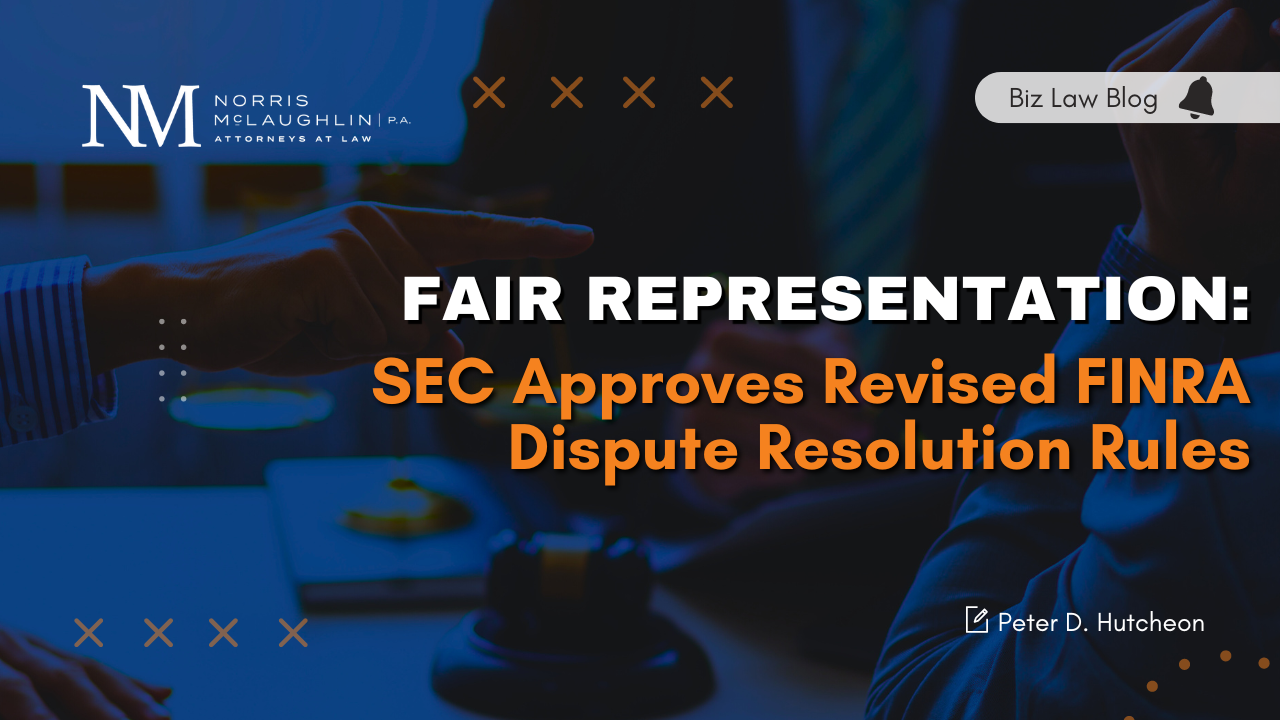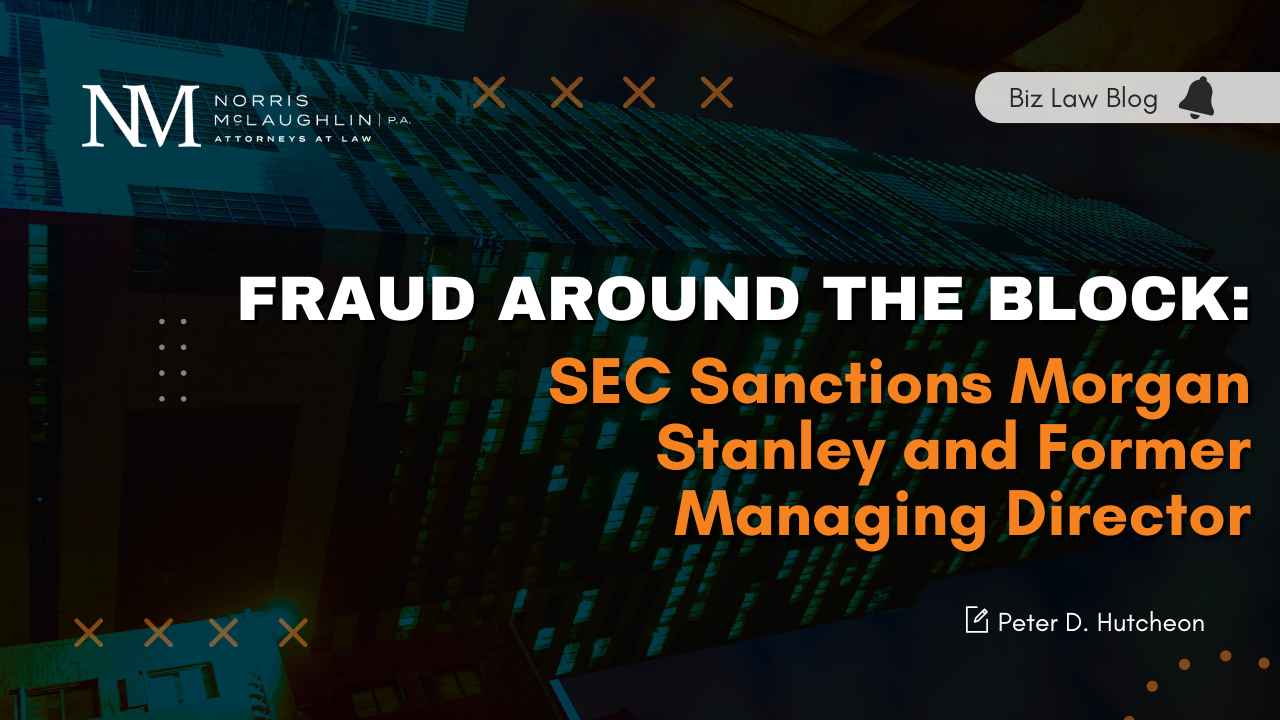SEC Brings Enforcement to Tragedy: Asserts Failed ESG Disclosure in Dam Collapse

On Jan. 25, 2019, the tailing dam of “upstream design” known as Dam 1 (the “Dam”) at the Corrego do Feijao iron ore mine six miles east of Brumadinho, Minas Gerais, Brazil, collapsed after suffering a catastrophic failure. That collapse released nearly 12 million cubic tons of mining waste into the Paraopeba River, caused the death of 270 people, resulted in “immeasurable environmental and social harm” (according to the April 28 Press Release of the U.S. Securities and Exchange Commission [“SEC”]), and “led to the loss of more than $4 billion in…market capitalization” of Vale, S.A., the Brazilian stock corporation (“Vale”), which owned the Dam. Specifically, the price of Vale’s American Depository Shares (“ADS”) fell 25%, and its corporate credit rating was downgraded to junk.
Vale’s ADS and several series of its notes were registered with the SEC, sold to U.S. investors, and both listed and traded on the New York Stock Exchange. Vale is also a reporting company under the Securities Exchange Act of 1934, as amended, filing quarterly, annual, and other required reports on SEC forms. Hence, Vale was and is subject to the enforcement jurisdiction of the Commission. It might be said that if one accesses American capital markets, one must expect to be required to “play by the rules” and face the consequences of any failure to do so. Indeed, Melissa Hodgman, Associate Director of Enforcement of the SEC, stated that the Commission seeks to demonstrate that it “will aggressively protect our markets from wrongdoers, no matter where they are in the world.” Interestingly, the Wall Street Journal reported in a Friday, April 29 story (page A 2, column 6), that a Vale executive said on an earnings call the previous day (the day the 76-page SEC Complaint was filed in the U.S. District Court for the Eastern District of New York) that the company strongly disagrees “with the claim and the suit, and …[will] certainly contest all the allegations.”
A tailing dam is an earthen structure constructed from the left-over dirt and rocks (sometimes known as slurry) remaining after digging out ore, in this case iron ore. “Upstream design” is where the slurry is pumped upstream of the iron ore pit to keep river water from impeding the extraction of the ore. The Dam was originally built in 1976 as a wall of compacted mud. The Dam grew over time (its height was increased 37 times) as more slurry was produced from the mining activity, and was at the time of collapse some 260 feet high. The Dam, as with all earthen dams, was susceptible to failure if the dam wall lost integrity from increased water content, making it more likely to lose the capacity to withhold the water trapped behind it. [Note 1]. Upstream tailing dams are now banned in Brazil. On Jan. 25, 2019, Vale’s ore mining operations were not immediately adjacent to the Dam, and Vale has asserted it was in the process of decommissioning the structure. In any event, the cause of the Dam’s was (according to experts retained by Vale after the collapse, as cited in the SEC Complaint) “liquefaction,” a geophysical phenomenon that results when “saturated dam waste deposits spontaneously lose strength and stiffness.” Those same experts concluded that the liquefaction probably occurred due to “accumulation of strain under constant load together with the cumulative rainfall over the prior years and the heavy rainfall towards the end of 2018.” It was also noted that the Dam had “no significant internal drainage.”
The Dam was not the first earthen dam of Vale’s to collapse causing loss of life. The Fundao dam near the city of Mariana, Brazil, was co-owned by Vale and BHP Group, plc. (“BHP”), another of the world’s largest mining companies and the biggest Australian business. In November of 2015, the Fundao dam failed, resulting in 19 deaths and, per the SEC Complaint, causing “significant environmental and social harm in what is commonly referred to as the Mariana dam disaster.” The Mariana dam collapse led to a material tightening of Brazilian mining rules, including the imposition of an “Extraordinary Audit” (including a detailed analysis of liquefaction) requirement for the Dam and several other tailings dams. In addition, beginning in 2017, Vale had to conduct semi-annual “Regulation Safety Inspections” (every March and September) and more detailed reviews every three years. The Mariana dam disaster led to class-action litigation by American shareholders against Vale and BHP, which was settled in 2020 with a payment of $25 million. One would have thought that the combination of the deaths, environmental damage, and financial liability exposure, together with the toughened mine safety rules, would have induced Vale to greatly increase its attention to the condition and exposures of its other earthen dams, but sadly, that did not prove to be the case.
According to the SEC Complaint, Vale had known since at least 2003 that the Dam was “dangerously fragile.” This assessment stemmed from the application of “established international best practices,” which were endorsed by the Brazilian Association of Technical Norms. The safety and stability audits relied on determining the “safety factor” defined as “the value of the ratio between the strength (maximum available shear stress) and the mobilized strength shear stress acting along…[the dam face], i.e., the ratio of the strengthening forces that stabilize the dam to the straining forces that destabilize it.” So, a safety factor of 1.0 indicates that the dam is at risk of imminent collapse; a higher safety factor implies greater dam stability. Each of four separate engineering auditor firms used by Vale during the period 2016 to 2019 concluded that 1.3 was the minimum safety factor for the Dam in its peak undrained condition. If a dam was undrained, but in a residual condition, a safety factor of 1.1 was the minimum safe condition. If the safety factors were not met, there would be an unacceptably heightened risk that liquefaction would lead to a dam collapse.
From 2016 through the collapse of the Dam, Vale made recurring statements in its filings with the SEC and in other public statements (including in connection with selling nearly $1 billion of its notes in registered offerings to U. S. investors) and in Vale’s annual Sustainability Reports that “the [Dam] had a Safety Factor in accordance with the world’s best practices and above the reference of the Brazilian Standard.” The SEC Complaint alleges that all during this same period Vale engaged in pressuring the engineering audit firms and/or deceiving them to cause them to reach safety factors which met or exceeded best practices, while Vale knew that the Dam was nowhere near meeting those requirements. In other words, Vale not only failed to disclose accurate information about the Dam and its attendant risks, Vale also actively concealed the true facts and continued to publish intentionally false statements, such as asserting in its Sustainability Reports that Vale adhered to the “strictest international practices” in evaluating dam safety, and that 100 percent of its dams were certified to be in stable condition.
On Feb. 4, 2021, Vale agreed to a $7 billion settlement with Brazilian authorities and faces a class action in the U.S. by its American investors, seeking recompense for the precipitous loss in market value of their ADS and notes. In November 2021, the Brazilian public prosecutor confirmed the indictment of 19 individuals (executives from Vale and engineering auditors). In addition, the authorities of Minas Gerais state have brought criminal actions against 16 individuals (Vale executive and one of the engineering audit firms). Vale has also been required to take down other dams that have the same upstream design as the Dam.
Although the SEC Complaint does not materially differ from other enforcement actions based on faulty OR fraudulent disclosure, this is the first Commission enforcement action that specifically seeks to hold a public company responsible for the accuracy and completeness of its environmental (part of so-called ESG) disclosures. Hence, reporting companies and other securities issuers should “mind what they say” in sustainability statements. A self-audit by a team of experienced business and environmental attorneys may prove a wise protective investment.
If you have any questions about this post or any other related securities or general business law matters, please feel free to contact me at pdhutcheon@norris-law.com.
Note 1: The author lives on a private lake created by an earthen dam and has had 10 years of experience in dealing with state dam safety requirements.




